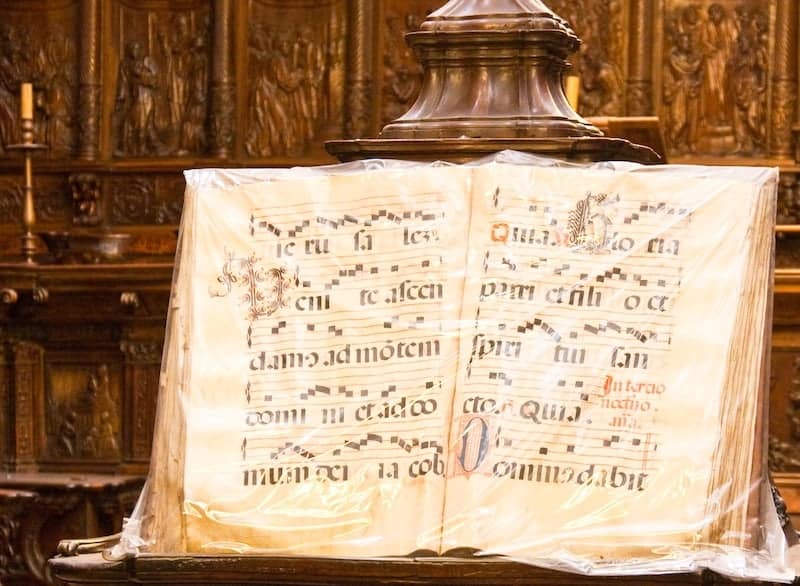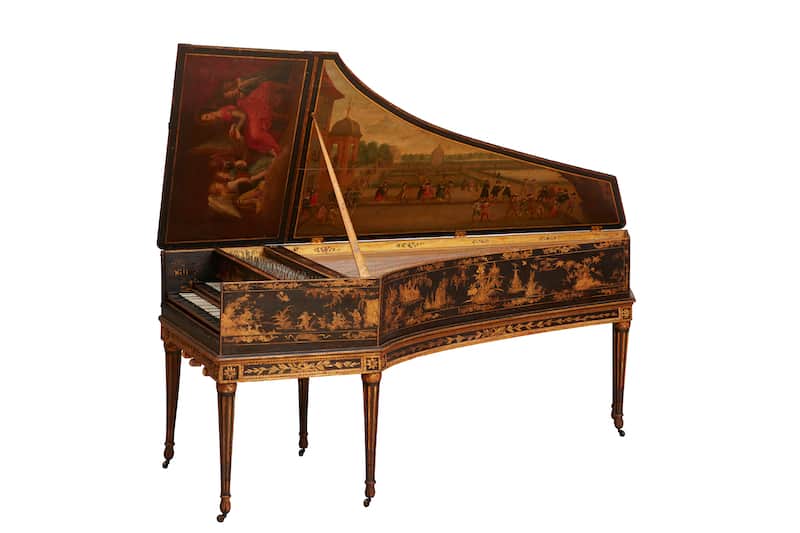The European classical music tradition stretches all the way back from the Middle Ages – and as early as 500AD – up to the 20th and 21st Centuries. A number of things link all this music together, but one of the defining features of Western art music, as it is sometimes called, is the use of formal musical notation. This distinguishes it from other genres such as folk music, which tend not to be written down.
As you’d expect with such a massive time frame, classical music changed and developed massively over the years, decades and centuries. As a result, we split classical music into periods, or eras. Each one has its own distinctive sounds, features and key composers. A Gregorian chant from the Medieval period sounds very different to a Romantic-era opera and, ideally, you should be able to listen to a piece and know roughly when it was written and who the composer might be.
This post will act as a guide to the different periods of classical music, with an overview of the six main eras: Medieval music, Renaissance, Baroque, Classical, Romantic and 20th Century classical. That’s a time span of more than one and a half millennia!
The Medieval Period (500-1400AD)

By far the longest era of classical music, the Medieval music period stretches from 500AD to 1400, a time span of 900 years!
One of the most significant developments during this time was that music was notated for the first time ever, allowing musical information to spread much more easily.
The era can be split into three mini-periods:
- Early Medieval music (500-1150AD)
- High Medieval music (1150-1300AD)
- Late Medieval music (1300-1400AD)
Art at this time was tied closely with religion, and the main form of music was Gregorian chant, or plainsong, which was sung by monks during Mass in the Catholic Church.
The music was monophonic, meaning that it contained just a single melodic line, sung in unison, with no accompanying harmony parts or instrumental accompaniment.
Here is an example, sung by the Gregorian Choir of Paris:
Polyphonic music (which has two or more simultaneous independent melodic parts) began to develop in the second half of the Medieval period.
This paved the way towards the grander Renaissance style that was to follow.
The Renaissance Period (1400-1600AD)
From 1400-1600 The Renaissance Era saw music become more expressive and complex.
Religious music was still ubiquitous, but secular music increased in popularity, as composers were allowed to write creative music for its own sake, and the invention of the printing press allowed for more widespread distribution.
Technological developments in instrument making gave ensembles access to larger ranges and increased textural variety, and harmony became richer, as it started to sound a little closer to the kind functional tonality that we use today.
Important Renaissance composers, many of whom focused upon choral music, include Josquin des Prez, a Frenchman who wrote both secular and sacred works, Italian composer of religious works Giovanni Pierluigi da Palestrina, and the Englishman Thomas Tallis.
Here is a vocal piece by des Prez:
The Baroque Period (1600-1750AD)
The Baroque Era was the dominant style during the years 1600-1750.
Perhaps its most distinctive feature is the use of dense polyphony, where multiple complex melodies weave in and out of each other to impressive effect.
Many of the forms and structures established during this period, including opera and concertos (one or more soloists featured with an ensemble), would become mainstays of classical music over the following centuries.
“Common practice harmony”, the functional tonal system that would remain prevalent through the Classical and Romantic periods, was also established.
The Brandenburg Concertos are by Johann Sebastian Bach, one of the greatest composers of all time:
Composers such as Antonio Vivaldi, Geroge Friedrich Handel, Henry Purcell and Arcangelo Corelli began to experiment with larger ensembles, thus essentially birthing the orchestra.
At the other end of the ensemble spectrum, solo keyboard works were also popular.
The pieces composed for the harpsichord, the predecessor to the piano, were ornate contrapuntal (another word for polyphonic), an archetypal sound of the Baroque period.

The Classical Period (1730-1820AD)
Confusingly, the word “Classical era” (capitalised) refers to this specific era (1730-1820), while “classical” (non-capitalised) refers to the whole western art music tradition that we are covering in this post.
Melody was now the order of the day: simple, elegant tunes and highly elegant tunes organised in neat, balanced phrases, in contrast to the complexity of the Baroque era.
The more expressive pianoforte now replaced the harpsichord as the dominant keyboard instrument of the age.
It also saw the orchestras become bigger with the addition of proper woodwind sections.
The symphony – an extended orchestral piece with four contrasting movements – was born, as was the string quartet.
Pioneered by Austrian composer Joseph Haydn, this was a chamber music format that most major composers would write for over the following centuries.
Supreme melodicist Wolfgang Amadeus Mozart is the archetypal Classical composer, and perhaps the most famous composer and prodigy of all time.
He was followed by Ludwig van Beethoven, who bridged the gap between the Classical and Romantic eras.
Beethoven wrote grand scale works, expanding upon previously strict symphonic rules and introducing programmatic content (meaning pieces with extra-musical narratives, music that is about something).
The Romantic Period (1800-1910AD)
Following on from Beethoven’s developments, The Romantic Period (1800-1910) saw composers free themselves from the restrictive conventions of the Classical era, working on a grander scale with much more expressive and emotive content.
The trend for programmatic works continued, with music inspired by nature, literature, legends, national identity and other non-musical stimuli.
We now see the emergence of stunning virtuoso performers, who were widely lauded for their instrumental skills.
Franz Liszt and Frédéric François Chopin were both composers and brilliant pianists.
German composer Richard Wagner was particularly influential in the development of opera, using much more adventurous harmony and increasing chromaticism, and pioneering the use of leitmotifs – musical phrases that represent specific characters.
His ideas influenced the likes of Richard Strauss, Verdi and Puccini.
Here is Wagner’s famous Ride of the Valkyries:
The 20th Century (1900-Present)
A vast range of totally new and radical music came out of the 20th Century, as composers reacted in different ways to the conventions and traditions of previous decades.
One example of this was Impressionism, a movement in the late 19th and early 20th Centuries, in which French composers like Claude Debussy and Maurice Ravel used ambiguous tonality and unusual scales like the whole tone scale to suggest colour, mood and atmosphere.
Elsewhere, the modernist movement was about rejecting tradition and embracing individuality.
Arnold Shoenberg pioneered atonalism – dissonant sounding music that dispenses with traditional harmonic function.
Meanwhile Russian composer Igor Stravinksy’s use of rhythm was highly innovative, utilising frequently shifting time signatures, and this is particularly evident in his revolutionary ballet The Rite of Spring:
A number of American composers, including Leonard Bernstein, George Gerswhin, looked towards jazz – then an exciting new artform – for inspiration.
Later on, minimalists like Phillip Glass and Steve Reich used minimal musical material, extensive repetition and electronic techniques, reflecting technological advances of the day.
Summary
So, that concludes our guide to the eras of classical music: we hope it will prove interesting and useful for you.
Of course, one of the best ways to help familiarise yourself with the sound of each era is lots of listening to the relevant major composers.
Enjoy!
